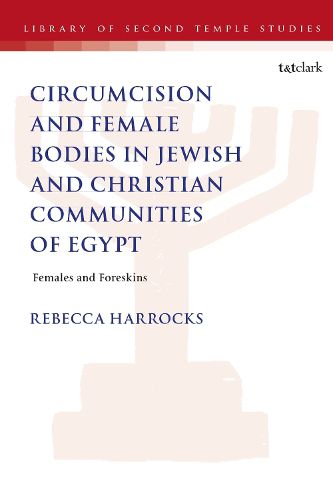Readings Newsletter
Become a Readings Member to make your shopping experience even easier.
Sign in or sign up for free!
You’re not far away from qualifying for FREE standard shipping within Australia
You’ve qualified for FREE standard shipping within Australia
The cart is loading…






Rebecca Harrocks presents some of the earliest evidence of male circumcision from ancient Egypt, exploring the connotations and implications for the Jewish and Christian communities of Alexandria and Egypt. The relevance of male circumcision for Jewish females is evident in Hebrew scripture, especially in relation to marriage, procreation, and parenthood, but little attention has been paid to women in scholarship. Harrocks addresses this oversight by considering not only what male circumcision meant for men, but also what it meant for women and the female body.
Drawing on a range of ancient literature, inscriptions, art, and human remains, the role of male circumcision in ancient Egypt is considered as a backdrop to its practice by the Israelites, who some in antiquity claimed adopted it from the Egyptians. Harrocks concludes with an exploration of the changes and consequences for Jewish customs suggested in early Christian texts - especially the Pauline writings - regarding the female body and a woman's interaction with her community, and highlights nuances to New Perspective thought given this broader gender awareness.
$9.00 standard shipping within Australia
FREE standard shipping within Australia for orders over $100.00
Express & International shipping calculated at checkout
Rebecca Harrocks presents some of the earliest evidence of male circumcision from ancient Egypt, exploring the connotations and implications for the Jewish and Christian communities of Alexandria and Egypt. The relevance of male circumcision for Jewish females is evident in Hebrew scripture, especially in relation to marriage, procreation, and parenthood, but little attention has been paid to women in scholarship. Harrocks addresses this oversight by considering not only what male circumcision meant for men, but also what it meant for women and the female body.
Drawing on a range of ancient literature, inscriptions, art, and human remains, the role of male circumcision in ancient Egypt is considered as a backdrop to its practice by the Israelites, who some in antiquity claimed adopted it from the Egyptians. Harrocks concludes with an exploration of the changes and consequences for Jewish customs suggested in early Christian texts - especially the Pauline writings - regarding the female body and a woman's interaction with her community, and highlights nuances to New Perspective thought given this broader gender awareness.